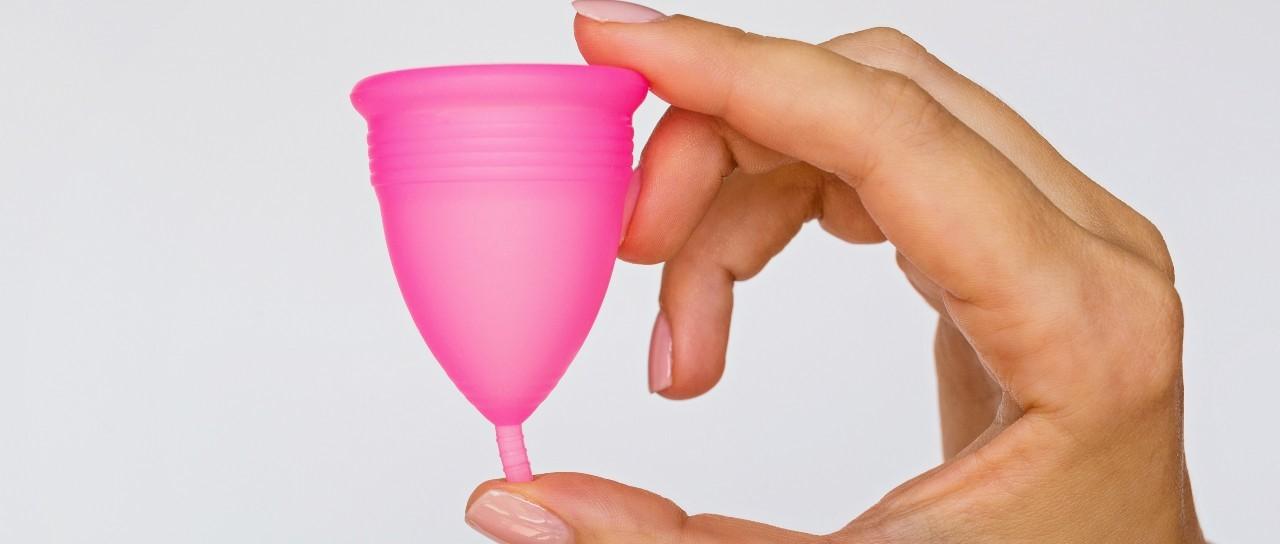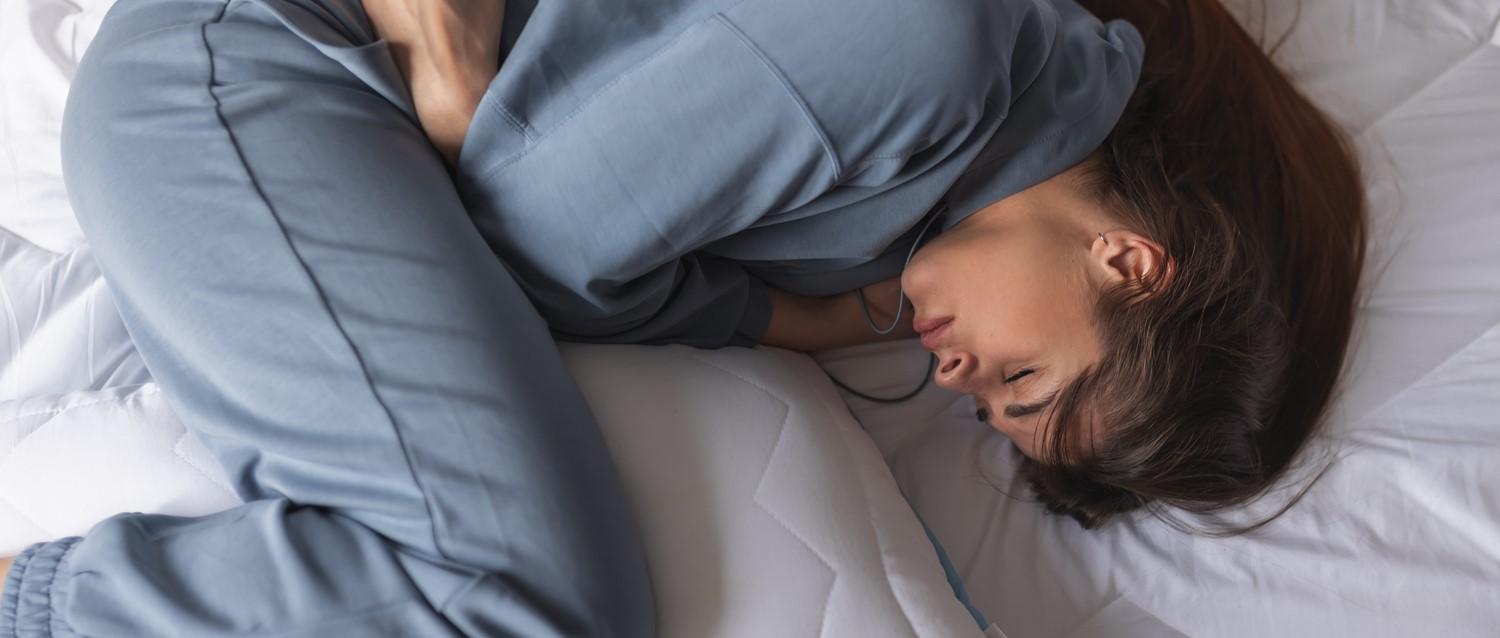
Can menstrual cups help fight period poverty?
Peer reviewed by Dr Sarah Jarvis MBE, FRCGPLast updated by Emily Jane BashforthLast updated 13 Oct 2021
Meets Patient’s editorial guidelines
- DownloadDownload
- Share
- Language
- Discussion
Period poverty arose as people struggle to access period products due to financial constraints, and it affects the daily lives of millions of menstruators around the world. 1 in 10 people who menstruate across the country can't afford to buy menstrual products.
In this article:
The issue of period poverty escalated during the pandemic, with Plan International UK reporting that 3 in 10 young women and girls specifically struggled to access menstrual products under lockdown.
Campaigners are still working tirelessly to ensure support for those living in period poverty. Students are missing school because they don't have appropriate products to manage their periods. Many have to borrow period products from friends. Some are even having unhygienic periods by using alternatives to suitable period products.
Continue reading below
The reality of living in period poverty
CEO and founder of Bloody Good Period, Gabby Edlin, explains how period poverty doesn't necessarily exist because cheap period products aren't available, but because the cheap products aren’t good enough.
"They can cause rashes and infections. People will use tampons for longer than they should because they can’t access the amount they actually need. We often hear of people using dried-out nappies to stem the blood flow."
She also explains how period poverty has a great impact on people’s emotional and mental well-being, as those struggling to access products have low self-esteem when feeling unable to take care of themselves.
In January 2020, the Department for Education launched a scheme to fund free period products in schools in England, mirroring similar commitments by Scotland and Wales. However, menstruators of all ages are still experiencing period poverty, with parents often prioritising nappies for their babies over pads or tampons.
"Menstruators will shove their own needs to the bottom of the pile, prioritising others, especially if they have a family," explains Gabby.
"We hear about people being forced to choose between food and a period product, but that choice doesn't even exist. People don’t consider the period product over anything else."
Bloody Good Period reports the average spend for a period remains £4,800 over 40 years. They also report that those seeking asylum, and relying entirely on the state, receive £37.75 per week, resulting in some of the most vulnerable communities having unsafe periods.
Plan International UK recently highlighted that 75% of 78 women seeking refuge struggled to obtain period pads or tampons while destitute, forcing them to overuse a period product, improvise, or beg for money.
With thousands relying on food banks for basic period products and many resorting to socks or newspapers to make their period slightly manageable, could menstrual cups save menstruators money?
What is a menstrual cup and how does it work?
Menstrual cups are reusable hygienic products shaped like a small funnel and made out of flexible rubber or silicone. The cup is inserted into the vagina to catch and collect period fluid. They can hold more blood than products like pads and tampons, and can be worn for up to 12 hours, depending on your flow.
Reusable cups can be washed and cleaned for repeated use, making them an eco-friendly product as well. They can last up to 10 years if cared for properly.
Continue reading below
What are the benefits of using a menstrual cup?
Menstrual cups have a variety of benefits alongside their financial benefits, such as:
Menstrual cups save time, as they can be worn for 6-12 hours, compared with the average 4-8 hours of a tampon.
Unlike tampons, menstrual cups don't dry the vagina. This protects against vaginal infections by preserving healthy bacteria.
Menstrual cups aren't associated with toxic shock syndrome (TSS), which is a life-threatening condition linked to tampon use, caused by bacteria releasing harmful toxins into the body.
Menstrual cups don't contain chemicals such as bleach and dioxin which, according to the World Health Organization (WHO), can be linked to cancer.
Many report having less cramping when using cups, although this is not a fact confirmed by medical professionals.
Cups don't create as much odour.
Reusable cups are environmentally friendly. Disposal of single-use menstrual products like tampons, pads and applicators generates 200,000 tonnes of waste per year, according to the Women’s Environmental Network.
Can anyone use a menstrual cup?
"Menstrual cups aren't for everyone," says Gabby, as she explains that period products aren't 'one size fits all'.
"Cups can be great for people who want to use something internal. However, a lot of people don't like internal products. Maybe cups aren't part of their culture, they have history of sexual trauma, or they just aren't comfortable."
Menstrual cups also have a larger cost upfront, so the best option would be if people could access them for free.
Gabby clarifies that even people who do use cups may not want to all the time.
"Every period can be different. It's important to understand that cycles vary and people might want to use external products instead of or alongside cups."
She also highlights that, while cups are fantastic for some, there's a lot of shame towards our bodies to unpack. Perhaps cups could help with that.
"Internalised misogyny has made people so afraid and disgusted by their own blood that they can't cope with the idea of touching it. That needs to change so we can be comfortable within ourselves. Menstrual cups could help people understand the body's functions as well as lowering the cost of a period."
Continue reading below
Is a menstrual cup more cost-effective?
The average cost of a menstrual cup is £23. A study published by The Lancet Public Health found that, over time, cups were, on average, just 5% of the cost of pads and 7% of the cost of tampons.
For people in poverty, savings of that magnitude could be life-changing. However, it is worth mentioning that, while menstrual cups can be more cost-effective, it's important that users have the means to clean them. For example, those who are homeless do not necessarily always have access to water to sanitise them, which could result in infections.
Real-life stories
25-year-old Steph found pads and tampons were expensive and she always seemed to buy at least a box a month, sharing: "If I didn't bring enough out with me, it was worse because I'd have to pay £2.50 for the sake of needing one tampon."
She admitted to being hesitant to buy a menstrual cup at first, because they're more expensive upfront, and she had to buy a second one to find a better fit. However, she now hasn't bought pads or tampons in three years, so the cost has more than evened out.
Meanwhile Tasmin, 26, started using a menstrual cup in 2019, originally as a more sustainable option, and had anxieties about getting the wrong cup.
"I was really worried about getting the wrong size, leakages and it not being comfortable. After doing some research on sizing, I bought it and have never looked back."
On whether a menstrual cup has saved her money, she estimates savings of £65 on tampons alone since July 2019. Tasmin also highlights the wider benefits of a menstrual cup, explaining they've changed how she sees her period. She feels a cup is more discreet, and no longer frets over leaks.
"My mindset around period blood has completely changed. I don't mind if my knickers get stained anymore. Prior to using a cup, I would have been ashamed," she shared.
37-year-old Dorothy lost her period three years ago due to stress and, when it came back, it was very heavy. She was changing tampons every half an hour, which really impacted her quality of life. Looking for a solution, she switched to cups.
Dorothy has made savings of £84 now she no longer buys tampons and pads in case of leaks. She also credits cups for reduced anxiety surrounding her period.
However, she does emphasise the inconvenience of changing in public where there isn't a basin near the toilet, saying: "It isn't necessary to wash your menstrual cup each time you empty it, but it's easier if you can."
Education alongside cups
On the other hand, Gabby stresses the importance of education alongside accessible period products.
"Period poverty is not going to be solved with a silver tampon. It requires a multi-pronged, holistic approach that also improves access to education and understanding of our bodies as well as products themselves."
If menstrual cups were offered as a money-saving period product, she emphasises that people also need to understand where the cup sits, how to insert one and what feels right and comfortable.
"It isn't just about throwing cups at people and leaving them to get on with it."
Menstrual cups are becoming increasingly popular, available in different sizes and colours. Menstrual cup brand Mooncup actually has a calculator on its website to estimate how much money you could save by switching to a cup.
A 25-year-old is able to save the equivalent of 93 months of Netflix payments over the course of a lifetime. So, with people with periods spending 6.5 years of their lives menstruating, perhaps cups could have a major impact on both the environment and our wallets if available to those in need. However, it's vital that education is as readily available as the resources themselves, plus understanding that cups aren't for everyone. Just because someone doesn't want to use a cup, they shouldn't have to settle for poor-quality pads or tampons.
Patient picks for Periods and period problems

Women's health
How to look after your mental health during your menstrual cycle
Self-care is important at all times, but it could be even more valuable when you have your period. The impact that your menstrual cycle can have on your overall mental well-being is often underestimated, but there are steps you can take to manage your stress levels and reduce the chance of existing mental illnesses being exacerbated during your menstrual cycle.
by Emily Jane Bashforth

Women's health
How to deal with your period at a festival
The sun is out, you've packed your glitter and you're ready to let loose at a festival. But suddenly, you come on your period - and the last thing you've ever felt like doing is sleeping in a tent with limited access to showers. Dealing with your period at a festival or when you're camping isn't ideal, whether it's trying to change a tampon in a hot Portaloo, or coping with cramps when you just want to have fun.
by Lydia Smith
Continue reading below
Article history
The information on this page is peer reviewed by qualified clinicians.
13 Oct 2021 | Latest version

Ask, share, connect.
Browse discussions, ask questions, and share experiences across hundreds of health topics.

Feeling unwell?
Assess your symptoms online for free
Sign up to the Patient newsletter
Your weekly dose of clear, trustworthy health advice - written to help you feel informed, confident and in control.
By subscribing you accept our Privacy Policy. You can unsubscribe at any time. We never sell your data.